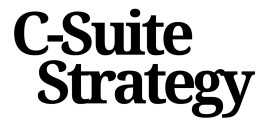
Understanding Market Transformation
Exploring the Dynamics of Market Evolution
In today's rapidly evolving business landscape, understanding market transformation is crucial for executives aiming to craft robust strategies. Market transformation refers to the significant shifts in how industries operate, driven by the intersection of economic, social, and technological factors. In this context, the Market Transformation Institute serves as a pivotal resource, offering insights into how organizations can adapt and thrive amidst change. The energy sector, for example, is undergoing a substantial reshaping, influenced by trends in energy efficiency and sustainability. Companies are re-evaluating their total assets and total liabilities to align with new market realities. According to recent data, the focus on optimizing building performance and reducing tax liabilities has become a priority for organizations seeking to enhance financial performance. Engaging with the Institute and its comprehensive resources, leaders can access key insights, often available in downloadable PDF formats, that illuminate the paths to navigating these transformations successfully. The Institute’s contributions program, often spearheaded by board members and respected industry figures, provides invaluable perspectives on leveraging investment income for sustained growth. It emphasizes the importance of total revenue derived from tax-exempt activities, advocating for strategic re-alignment with market trends. For directors and executive directors, understanding the intricacies of market dynamics is essential. By connecting the dots between macroeconomic trends and micro-level impacts, executives can better prepare their organizations for fiscal year challenges and capitalize on opportunities for revenue and expenses optimization. Navigating Geico's Strategic Roadmap is an excellent example of how strategic insights can be harnessed effectively within a transforming market environment. Ultimately, market transformation demands that C-suite leaders not only anticipate change but actively adapt to it, building adaptable strategies that ensure their organizations remain competitive and relevant in the years ahead. This proactive approach provides a solid foundation for aligning with broader market trends, aligning closely with sections that discuss the alignment of strategy and data-driven decision making, emphasizing resilience and forward-thinking regulatory navigation.Aligning Strategy with Market Trends
Aligning Business Strategy with Emerging Market Trends
As organizations seek to thrive amidst evolving market landscapes, aligning strategy with current trends is crucial. The Market Transformation Institute provides invaluable insights into how companies can adapt their strategies to stay ahead. By understanding the dynamics of market transformation, businesses can position themselves to leverage emerging opportunities effectively.
One of the key aspects of aligning strategy is recognizing the role of energy efficiency and sustainability. As the demand for sustainable practices grows, organizations must integrate these considerations into their strategic planning. This not only enhances their market position but also contributes to long-term resilience.
Data plays a pivotal role in shaping strategic decisions. By analyzing market data, companies can identify patterns and trends that inform their strategic direction. This data-driven approach ensures that strategies are grounded in reality and aligned with market demands.
Furthermore, aligning strategy involves understanding the financial implications of market trends. Organizations must assess their total liabilities and assets to ensure that their strategies are financially viable. This includes evaluating revenue expenses and investment income to maintain a healthy fiscal position.
Nonprofit organizations, in particular, can benefit from aligning their strategies with market trends. By focusing on building performance and energy efficiency, they can enhance their contributions program and improve their overall impact.
To effectively align strategy with market trends, it is essential to foster collaboration among key stakeholders, including board members and executive directors. This collaborative approach ensures that the organization is well-positioned to navigate the complexities of market transformation.
For more insights on how C-suite leaders can confidently navigate strategic transformation, explore this strategic transformation guide.
Leveraging Data for Strategic Decisions
Empowering Decisions with Data
In an era where information is abundant, leveraging data effectively is crucial for informed decision-making. The Institute of Market Transformation (IMT) provides valuable resources that can help leaders navigate this complex landscape. With access to comprehensive market insights, aligning strategies with trends becomes more straightforward.
Understanding key metrics is essential in this process. Companies should focus on relevant data sources such as financial performance, revenue expenses, total assets, and liabilities. By analyzing these figures, organizations can better assess their fiscal year outcomes and set realistic future goals. It's also important to monitor investment income and contributions to programs as they significantly impact the overall financial health.
Additionally, forms such as period forms or tax-exempt documents can reveal valuable insights into an organization's operational efficiency. Effective utilization of these data points ensures a robust alignment of strategic initiatives with market dynamics. Consider integrating energy efficiency metrics into the decision-making process to stay ahead of legislative pressures and foster sustainable growth.
The IMT's expertise in market transformation is instrumental for ensuring that strategies are not only innovative but also grounded in comprehensive market data. Aligning this with enhancing financial agility can aid organizations in managing financial risks and seizing market opportunities.
Building a Resilient Organization
Strengthening Organizational Fortitude
Ensuring a business is robust enough to withstand market transformations requires a vigilant approach to resilience. An organization's strength lies not merely in its present capabilities, but in its ability to adapt and transform. This involves a comprehensive evaluation of its total assets and liabilities, providing a clear picture of fiscal health. Understanding this balance is key to maintaining financial stability even in turbulent times.- Build a culture of adaptability: Encourage flexibility and innovation at all levels. This can be supported through ongoing training programs and initiatives that promote energy efficiency and sustainability.
- Integrate strategic insights: Leverage data-driven insights from services like the Market Transformation Institute to inform decision-making and strategy implementation. Utilizing comprehensive reports and PDFs provided by such institutes can guide in aligning business goals with market trends.
- Foster resilience with board support: The involvement of board members is crucial in reinforcing organizational resilience. Board members can provide valuable insights into non-profit practices and offer strategic guidance based on experience with energy efficiency and other market transformations.
- Optimize leadership roles: Key employees, such as directors and executive board members, play a crucial role in steering the organization's direction. Their ability to navigate financial strategies, such as balancing tax-exempt opportunities and optimizing revenue sources, can make a significant difference.
Navigating Regulatory Changes
Adapting to Regulatory Shifts
Navigating the ever-evolving regulatory landscape is a pivotal aspect of ensuring long-term success in today’s dynamic business environment. Organizations must remain vigilant and agile, adapting their strategies to align with changing regulations and policies. This requires a comprehensive understanding of the market transformation dynamics, especially in sectors like energy efficiency and building performance, as guided by institutions like the Market Transformation Institute.
Understanding regulatory changes starts with monitoring key governing bodies and anticipating shifts that may impact your organization. Key considerations include:
- Continuous Education: Ensure your board, executive director, and key employees are informed about regulatory adjustments that can affect financial performance, tax exempt status, and total assets.
- Data Analysis: Utilize data-driven insights to predict regulatory impacts on income and revenue expenses. Keeping abreast of reports from nonprofit bodies and leveraging insights from institutes like IMT can prove invaluable.
- Engage with Stakeholders: Collaborate with a diverse market of stakeholders, including board members, to ensure comprehensive understanding and compliance. Effective communication is critical when adjusting strategies to adhere to new guidelines.
- Investments in Compliance: Allocate resources towards compliance programs that can proactively address regulatory changes. This involves assessing liabilities, assets, and ensuring all fiscal year forms are up-to-date.
Through strategic adjustments and a robust understanding of market dynamics, organizations can effectively navigate regulatory changes. Building resilience against potential disruptions ensures steady performance and aligns with broader organizational transformation goals.
Future-Proofing Your Business
Adapting to the Future Landscape
In an era where market transformation is a constant, future-proofing your business is not just a strategy but a necessity. To stay ahead, organizations must be agile and ready to adapt to evolving market dynamics. This involves a comprehensive understanding of how market trends and regulatory changes can impact your business model.
One key aspect is aligning your strategy with the insights gained from the Market Transformation Institute. By leveraging data-driven insights, your organization can anticipate shifts and make informed decisions that ensure long-term success. This involves not only understanding current market trends but also predicting future changes in areas such as energy efficiency and building performance.
Integrating Strategic Data
Data is at the heart of future-proofing strategies. Organizations should harness data to drive strategic decisions, focusing on areas like financial performance, revenue expenses, and investment income. By analyzing these metrics, you can identify potential risks and opportunities, allowing your organization to adapt quickly to changes in the market.
Moreover, integrating insights from nonprofit entities and institutes like IMT can provide valuable perspectives on market transformation. These organizations often have access to extensive data and research that can inform your strategic planning.
Building Resilience
Building a resilient organization involves preparing for both predictable and unforeseen challenges. This requires a robust governance structure, with active involvement from board members and key employees. Regular reviews of total assets and liabilities, as well as a focus on improving building performance, can help ensure that your organization remains competitive and sustainable.
Incorporating a tax-exempt strategy where applicable, and understanding the implications of tax policies on your business, can also contribute to a resilient fiscal year. By keeping a close eye on regulatory changes, your organization can navigate these complexities with confidence.
Ultimately, future-proofing your business is about creating a flexible strategy that can withstand the test of time. By focusing on strategic insights, leveraging data, and building resilience, your organization can thrive in an ever-changing market landscape.














